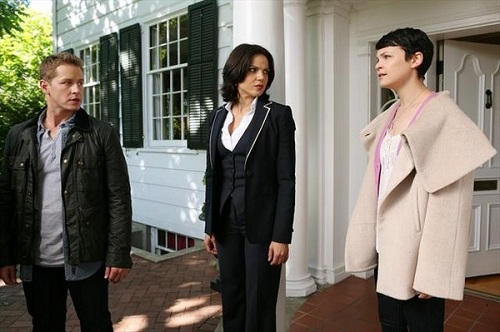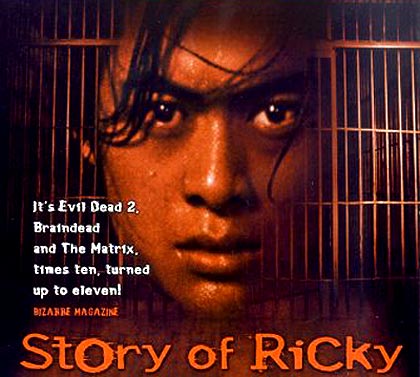The following piece contains SPOILERS for The Hunger Games: Mockingjay – Part 2. Proceed with caution.
This is Part 4 of a 4 part series leading up to the release of The Hunger Games: Mockingjay – Part 2, each looking at an individual film in the series and it’s legacy. Read Part 3 here.
The Hunger Games: Mockingjay – Part 2 is angry, dark, and hopeful. This is the end, the final chapter in a franchise that has worked so hard to make its world one of consequence. The Hunger Games series works with ideas of humanity, violence, politics and skepticism. Mockingjay-Part 2 brings the rebellion that has been promised since Katniss pulled her trick with the berries in the first film. It offers a conclusion, a resolution. What it doesn’t do, though, is make things easy.
Mockingjay – Part 2 is message moviemaking. It’s interested in its ideas more than it is in its entertainment value. It wants to leave its audience thinking. If there’s one thing Mockingjay – Part 2 proves, it’s that these movies are trying to convey reality for what it is: horrifying and beautiful. The Hunger Games is a story of disillusionment, tragedy, and the human goodness that is ultimately mankind’s redemption.
“We’re fickle, stupid beings with poor memories and a great gift for self-destruction,” or so writes Plutarch near the film’s end. For much of the film’s runtime, it seems to prove this true. Mockingjay-Part 2 is about a war. It’s about the costs of waging one, and the hollow sense of victory that comes at its conclusion. The first three movies in The Hunger Games series remind us of our own humanity. They refuse to let the spectators off the hook, and keep the audience from losing the sense of visceral reality that comes with watching an entertaining spectacle. Part 2 takes this message further. This is a movie that works to remind its audience that the action sequences they so desperately crave are brutal and horrific.
Finnick’s death, in particular, plays out like the appallingly violent thing it would really be. As he takes on an overwhelming number of mutts, the camerawork is frenetic and terrified. This is not to say that the scene becomes incoherent, but it is horribly indicative of the confusion and terror that infects the scene. Finnick does not die a hero’s death. He’s simply the last up the ladder, and when his death comes, it is quick and painful. His screams are real and visceral, and Katniss kills him out of mercy. This is what it means to die in war. There’s no time, no moment of silence for fallen victims. Finnick dies and they have to keep moving.
The most brutal death in the film is equally brief. Prim, the character who truly started this entire story, simply explodes. One second she’s there, and the next she’s not. There is no time, even for her. Death is immutably real. The characters around Katniss die often, and we feel the reality of their deaths because they are never allowed anything remotely close to a fictionalized goodbye. Eliminating characters this way gives Mockingjay – Part 2’s audience a kind of whiplash. It forces us to experience the chaos of this war alongside the characters. It’s not pretty or glorious. It’s messy, violent, brutal, and confusing.
Violence of this kind is accurate. The film makes these deaths terrifying, but only in the most defeated way. They’re a product of a war between two sides, neither of which is truly good. Part 2 uses its violence to deconstruct the very idea of triumphant revolution. Instead, the film posits its war as one of gray morality, one where both the rebels and the Capitol both commit heinous acts. Part 2 is suspicious of power, no matter which side it comes from.
Mockingjay channels these suspicions through Coin, the film’s ostensible savior. She’s supposed to swoop in, saving the districts from the oppressive tyranny of the Capitol. She’s supposed to be better than her predecessor, the delicious and terrifying President Snow, but she’s not. President Coin seizes power the same way Snow does. She declares herself interim President of Panem, manipulating the rebellion so that she can take power with District 13 relatively unscathed. She sends firebombs to destroy Capitol children in order to bring about a speedy end to the war.
Worse still, she suggests a new Hunger Games, one which she argues manages the need for blood against the need to sustain life. Besides the general brutality of this argument, it is also one that completely defeats the entire purpose of rebellion, dooming a new faction of Panem’s citizenry to a life of hardship.
This is pure disillusionment. The promise of hope, of a new day and a new world, are crushed inside this meeting. Katniss kills Coin, but not because she wants to fix this. In her eyes, that’s impossible. Instead, she does it as a gesture of her own ambivalence. Humanity is irredeemable. Any group that chooses to kill children in order to solve its problems cannot be saved. Coin employs the Capitol’s tactics to defeat them, and in doing so destroys even the idea of a new world.
As a result, Mockingjay-Part 2 becomes rather morose. The audience comes to understand that there is no real victory, no real sense of triumph. Instead, there is only a sense of loss, a feeling of pervasive futility. This futility is highlighted in Katniss’s mission itself, one that proves to be inconsequential in the war as a whole. Katniss’s squad, all of the people they lose on their mission to assassinate Snow, all those deaths didn’t lead to Snow’s death. The war ends without Katniss’s help; she becomes a non-factor.
As a viewer, experiencing Katniss’s ineffectiveness can be frustrating. Heroes are supposed to have an effect on their plots. Katniss was our protagonist, the character who was supposed to change the country of Panem forever. Instead, agency is stripped away from her. Mockingjay – Part 2 fights against the idea of Katniss as a chosen one. She’s a simple girl, one cog in a much larger machine. That’s the way the world is. There are no real saviors, no real heroics. Mockingjay rejects the idea that Katniss is anything other than a puppet, and works reflexively to suggest the unreality involved in the chosen one myth.
Katniss goes through the film like she goes through the games. She is dulled, unable to fully grasp the horrors of what she is going through. When it’s over, when she has given up, she goes home. This is the hero’s triumphant return. She’s won the war, and liberated the oppressed from the tyrannical reign of President Snow and the Capitol. The feeling is not one of triumph, though. She has lost so much, seen so many horrors, that her experiences are dulled. She’s broken.
We see her slink around her house, unspeaking and exhausted. Then, of all things, we see Prim’s cat. This stupid cat, the one that has been a strange presence on the outskirt of each of these films, shows up at the old Everdeen house looking for Prim. Katniss screams at it, unleashing everything that has piled up inside of her for two years onto this cat. She finally lets go. She lets herself be weak, she lets the pain that has been inside her finally externalize itself. Katniss starts to heal.
All of the sudden, the film’s palate begins to shift. The grays that have dominated the film thus far give rise to greens and oranges. Katniss goes hunting, not because she needs the food, but because it’s something normal. As she looks out on the woods that were once her only refuge, we see a kind of beauty that has been scarce in the movie thus far.
Then we have Peeta, who is planting primroses in the garden of Katniss’s house. This action alone, one that is small, symbolic, and completely unnecessary, is a perfect summation of everything that he represents for this series. His struggle to return to himself is an essential part of Mockingjay – Part 2, and his final arc is suggestive of just how important he is. He’s a figure of hope, a suggestion that the world is more than simply a place where humanity destroys itself. Katniss and Peeta have been through remarkable trauma, but they persist in living. They keep each other alive, and that’s how they are able to honor those they have lost.
The film’s final scene sees Katniss and Peeta with children of their own. They play in a beautiful meadow, and everything seems almost too idyllic. Katniss’s baby fusses awake, and the words Katniss says are a summation of everything this series is about. Katniss still gets nightmares, and they will never really go away. They’re scars of a past that cannot be denied. Whenever she’s threatened, though, or feeling overwhelmed, she does something rather simple. “I make a list in my head of every act of goodness I’ve seen someone do.”
The final scene of The Hunger Games series is a suggestion of life as it is lived. It’s a suggestion of tragedy that has been survived, but not overcome. This scene is a reminder that the horrors of the past will never truly leave, and they can never be forgotten. At the same time, though, it works to remind us that there is good to be had in this world.
Humanity, in its truest sense, is both of these things. We live through horrors, and we work to make the world a better place. We get up every day, because it’s the only way to prove that we are not defeated. We fight the darkness of the world around us with the only thing we have: our own humanity. That’s what The Hunger Games is about.
Will we look back at this series fondly? Hopefully, we can look back at Katniss, Peeta, and the world of The Hunger Games as a place where humanity was never forgotten. Let’s look back on these films and see that they acknowledged the darkness that is all around us. They acknowledged the horrors, the impossibility of any lasting peace, and still decided that what was left was worth having. This series dared to be dark, it dared to be political, and it dared to be about something. More importantly, though, it dared to be human.






